Sensor Sweep: Godzilla, Thane, Barry Sadler, Jack Williamson
Monday , 11, September 2023 Sensor Sweep 2 CommentsRPG (Arbiter of Worlds): This week marks the 24th episode of my series of instructional videos about how to be a better gamemaster. In this week’s video, I discuss how to mash up your favorite RPG system with another system to make a unique hybrid game. Car Wars + Traveller yields Driver. Cyberpunk + Runequest yields Runepunk. It’s time to smash the system!
H. P. Lovecraft (Giant Freakin Robot): Horror has proven to be one of Hollywood’s most profitable genres, and every year, a new low-budget film comes out and dominates the box office for weeks, if not months, at a time. A major, big-budget H.P. Lovecraft production has yet to happen, even though Cthulhu is one of pop culture’s most popular monsters, so what’s the problem?
Hollywood’s most profitable genres, and every year, a new low-budget film comes out and dominates the box office for weeks, if not months, at a time. A major, big-budget H.P. Lovecraft production has yet to happen, even though Cthulhu is one of pop culture’s most popular monsters, so what’s the problem?
Cinema (Godzilla Movies): As we await the new trailer for Godzilla Minus One (2023), dropping tonight, the teaser for the trailer revealed some interesting hints at the movie’s story. Here’s some of the biggest reveals so far: 1947? A message to the Prime Minister of Japan is dated, “10 February, 1947.” Although we’ve known for some time that the film would take place immediately after the post-war in the late 1940s, this is the first time we’ve been given a definitive year as to when the film takes place.
Publishing (The Atlantic): Earlier this year, the Department of Justice blocked Penguin Random House, owned by the German media giant Bertelsmann, from acquiring Simon & Schuster. The big five publishers—HarperCollins, Penguin Random House, Hachette, Macmillan, and Simon & Schuster—already control about 80 percent of the book market. The literary class was relieved.
Comic Books (Paperback Warrior): Warren Publishing experienced success with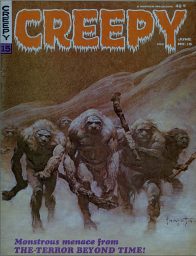 one of their flagship comic magazines, Creepy. The black and white magazine escaped the Comic Code Authority because their rules and regulations didn’t govern magazines. This era of comic and paperback publishing found success by concentrating their efforts on sword-and-sorcery tales. This was a fertile landscape dominated by the reprinting of Robert E. Howard’s Conan stories in the Lancer paperbacks and the birth of the character in comic format.
one of their flagship comic magazines, Creepy. The black and white magazine escaped the Comic Code Authority because their rules and regulations didn’t govern magazines. This era of comic and paperback publishing found success by concentrating their efforts on sword-and-sorcery tales. This was a fertile landscape dominated by the reprinting of Robert E. Howard’s Conan stories in the Lancer paperbacks and the birth of the character in comic format.
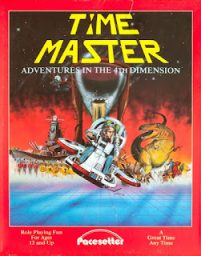 RPG (Grognardia): That the history of the RPG industry is filled curiosities should come as no surprise. Then, as now, “the industry” largely consists of small operations big on passion but often lacking in the business sense necessary to channel that passion into a lasting enterprise. Pacesetter Ltd is a great example of this from my youth.
RPG (Grognardia): That the history of the RPG industry is filled curiosities should come as no surprise. Then, as now, “the industry” largely consists of small operations big on passion but often lacking in the business sense necessary to channel that passion into a lasting enterprise. Pacesetter Ltd is a great example of this from my youth.
Robert E. Howard (Sprague de Camp Fan): “Untitled” appeared for the first time in Bran Mak Morn: The Last King, Ballantine (Del Rey) Books, 2005. A prefatory introduction tells us that this is “without doubt the “novel” that Howard had referred to in a 1923 letter to his friend Clyde Smith.”
Authors (Special-Ops): In the heart of the turbulent 1960s, amid the chaos of the Vietnam War, a timeless melody emerged from the depths of the conflict. It was a song that would resonate through the ages, a tribute to the elite warriors of the U.S. Army, the Green Berets. This legendary ballad’s creator was Barry Sadler, a man whose life was as remarkable as the anthem he penned.
War, a timeless melody emerged from the depths of the conflict. It was a song that would resonate through the ages, a tribute to the elite warriors of the U.S. Army, the Green Berets. This legendary ballad’s creator was Barry Sadler, a man whose life was as remarkable as the anthem he penned.
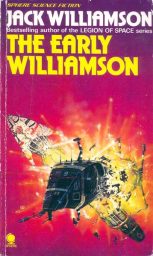 Science Fiction (Dark Worlds Quarterly): The Early Jack Williamson, a collection from 1978, largely defines the first phase of Williamson’s career, December 1928 to December 1933. The year 1934 begins the second stage of Jack’s career, based on the publication of his first famous novel, The Legion of Space. The five years before that serial in Astounding Stories, were largely the Hugo Gernsback years for Jack, though he also sold to all the other editors as well. These early days were also the A. Merritt imitating years, something he begins to move away even before 1934.
Science Fiction (Dark Worlds Quarterly): The Early Jack Williamson, a collection from 1978, largely defines the first phase of Williamson’s career, December 1928 to December 1933. The year 1934 begins the second stage of Jack’s career, based on the publication of his first famous novel, The Legion of Space. The five years before that serial in Astounding Stories, were largely the Hugo Gernsback years for Jack, though he also sold to all the other editors as well. These early days were also the A. Merritt imitating years, something he begins to move away even before 1934.
Reading (DMR Books): Though I enjoy a variety of genres, Sword and Sorcery holds a special place in my heart. While the first fantasy I was familiar with is The Chronicles of Narnia and like many people I was highly affected by The Lord of The Rings, I tend to come back to S&S. I have written this essay in order to explain why.
Pulp (M Porcius): Today we read the fourth Kilkenny Cats story, “The Mutineers,” from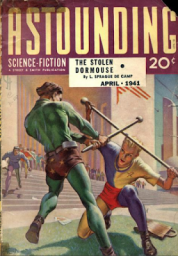 the April 1941 Astounding, in which also appear two stories I have already read, Theodore Sturgeon’s famous classic “Microcosmic God” and A. E. van Vogt’s “Not the First,” as well as the first part of a serial by L. Sprague de Camp.
the April 1941 Astounding, in which also appear two stories I have already read, Theodore Sturgeon’s famous classic “Microcosmic God” and A. E. van Vogt’s “Not the First,” as well as the first part of a serial by L. Sprague de Camp.
 Games (Por Por Books): I played wargames in the 1970s, when I was a teenager. At the time I wasn’t aware of this book, and looking through it nowadays transports me back 45+ years to an era when there were no computers, no internet, phones were rotary-dial, and when you went to the more higher-end hobby stores and department stores, you would see Avalon Hill games on the shelves. And in the pages of magazines like National Lampoon, you’d see ads from Strategy and Tactics magazine, aimed at the under-40 male demographic.
Games (Por Por Books): I played wargames in the 1970s, when I was a teenager. At the time I wasn’t aware of this book, and looking through it nowadays transports me back 45+ years to an era when there were no computers, no internet, phones were rotary-dial, and when you went to the more higher-end hobby stores and department stores, you would see Avalon Hill games on the shelves. And in the pages of magazines like National Lampoon, you’d see ads from Strategy and Tactics magazine, aimed at the under-40 male demographic.
Fiction (Fantasy Literature): What Dreams May Come. Matheson, of course, had already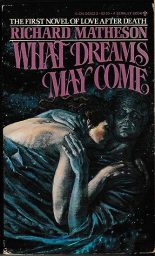 enjoyed over 25 years of being a writer of well-respected fantasy, sci-fi and horror fare; this reader had previously been wowed by such Matheson novels as I Am Legend (1954), The Shrinking Man (1956), A Stir of Echoes (1958) and Hell House (1971), as well as by the short-story collections The Shores of Space (1957) and The Best of Richard Matheson (2017).
enjoyed over 25 years of being a writer of well-respected fantasy, sci-fi and horror fare; this reader had previously been wowed by such Matheson novels as I Am Legend (1954), The Shrinking Man (1956), A Stir of Echoes (1958) and Hell House (1971), as well as by the short-story collections The Shores of Space (1957) and The Best of Richard Matheson (2017).
Games (Walker’s Retreat): This week we’ll be looking at Palladium’s superhero game, Heroes Unlimited 2nd Edition (“HU2e”). I’m comparing it to Advanced Dungeons & Dragons 1st Edition, with the former standing in for Palladium’s catalog in general due to how similar they all are. The purpose of this series is to analyze these as technical manuals. The purpose of a technical manual is to teach the reader how to perform a task or use a product, and playing a fantastic adventure wargame is both simultaneously.
Weird Tales (Tellers of Weird Tales): In “The Eyrie” for June 1923, the editor, presumably Edwin M. Baird, once again lamented the sameness of the stories being submitted for publication in Weird Tales: THE TIME has come to talk of cats and Chinamen, and rattlesnakes and skulls–and why it is these things abound in yarns for WEIRD TALES.
Pulp (The Obelisk): Frederick Nebel lived a life as hardboiled as any of his characters.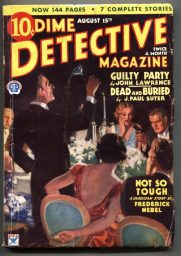 Born in 1903, Nebel spent his early years in New York City. There, the Staten Island native tried his hand at a variety of tough jobs like stevedore, dock hand, and seaman aboard a tramp steamer. Nebel would go on to dedicate multiple decades to pulp writing. His three typewriters supposedly churned out four million words over twenty-five years.
Born in 1903, Nebel spent his early years in New York City. There, the Staten Island native tried his hand at a variety of tough jobs like stevedore, dock hand, and seaman aboard a tramp steamer. Nebel would go on to dedicate multiple decades to pulp writing. His three typewriters supposedly churned out four million words over twenty-five years.
Science Fiction (Book Graveyard): The year is 1959. The looming threat of nuclear war is an everyday worry. In New York City they have random air raid warnings wherein everyone has to take cover in practice for the big bomb. Seconds before the air raid alarm goes off, we get to meet the small group of main characters; super star ad agency man Bob Randall, tough streetwise longshoreman Johnny, a mousy accountant, a secretary, a pickpocket, and a call girl.
Horror (Sweet Freedom): Superhorror, published by W.H. Allen in 1976, as the slim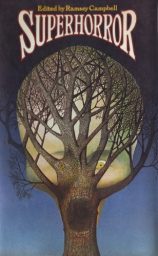 anthology was titled in that original UK edition and its US reprint (the 1980 UK paperback takes the variant title), includes the following stories, all original to it:
anthology was titled in that original UK edition and its US reprint (the 1980 UK paperback takes the variant title), includes the following stories, all original to it:
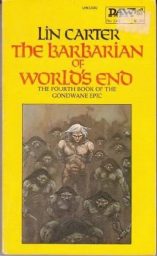 Fantasy (Cyborg Caveman): Yet another adventure novel by science-fantasy’s most (or least, depending on how you look at it) famous second banana. Ganelon Silvermane is a genetically-engineered superman, created by a lost race. Wandering from adventure to adventure in the days of earth’s last great continent Gondwane, Ganelon has no overarching mission and no destiny to fulfill.
Fantasy (Cyborg Caveman): Yet another adventure novel by science-fantasy’s most (or least, depending on how you look at it) famous second banana. Ganelon Silvermane is a genetically-engineered superman, created by a lost race. Wandering from adventure to adventure in the days of earth’s last great continent Gondwane, Ganelon has no overarching mission and no destiny to fulfill.
Edgar Rice Burroughs (Mostly Old Books and Rust): Evidently Burroughs wrote this as a metaphorical response to American Communists, which he abhorred, although I wasn’t able to figure out the connection. Set in the not-too-distant future USA astronauts on a mission to Mars are maliciously crash landed into a crater on the moon by saboteur Orthis, a sociopath with a vendetta for hero Julian.
Comic Books (Rough Edges): I’ve read the second issue of the new CONAN THE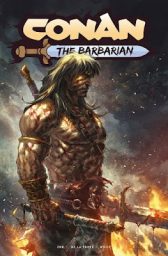 BARBARIAN comic book and continue to be very impressed. This is Part 2 of the storyline “Bound in Black Stone”, which finds Conan, still a relatively young mercenary and adventurer, and his companion, the Pictish female scout Brissa, on the run from and battling a horde of undead warriors flooding north from Aquilonia into Cimmeria.
BARBARIAN comic book and continue to be very impressed. This is Part 2 of the storyline “Bound in Black Stone”, which finds Conan, still a relatively young mercenary and adventurer, and his companion, the Pictish female scout Brissa, on the run from and battling a horde of undead warriors flooding north from Aquilonia into Cimmeria.
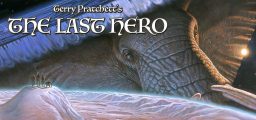 Fantasy (Goodman Games): Discworld is the setting for forty-one novels, several plays and shorts stories, and a computer game or two. The Discworld is a 10,000 mile diameter disc carried through space on the backs of four gigantic elephants carried on the back of a titanic turtle.
Fantasy (Goodman Games): Discworld is the setting for forty-one novels, several plays and shorts stories, and a computer game or two. The Discworld is a 10,000 mile diameter disc carried through space on the backs of four gigantic elephants carried on the back of a titanic turtle.
Art (Art of the Movies): William Reynolds Long had a very successful career, long before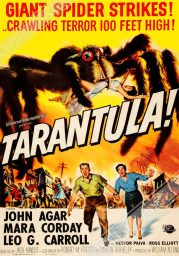 he painted his first movie poster. Born in 1917 in San Gabriel, California, his first paid illustration work was for a comic serial about a host shot pilot, Tailspin Tommy. In the pre-War years he continued on an aeronautical theme, producing incredibly details ‘cut away’ drawings of aircraft for North American aviation.
he painted his first movie poster. Born in 1917 in San Gabriel, California, his first paid illustration work was for a comic serial about a host shot pilot, Tailspin Tommy. In the pre-War years he continued on an aeronautical theme, producing incredibly details ‘cut away’ drawings of aircraft for North American aviation.
Games (Lich van Winkle): Hex maps for boardgames apparently began with Agon, London 1842. Hexagonal chess was invented in Poland in 1936. The board wargame was invented in 1953, published in 1954 as Tactics by Avalon Hill. Now you did not need large numbers of figurines and terrain to simulate wars on your tabletop. You just had to buy a kit made of cardboard pieces, a complete game delivering a specific experience varying somewhat with replay.
D&D (Tenkar’s Tavern): It was announced near the end of August that many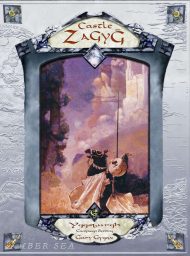 of Gary Gygax’s works that were released (and later pulled from distribution) well over a decade ago were returning to distribution.
of Gary Gygax’s works that were released (and later pulled from distribution) well over a decade ago were returning to distribution.
Castles & Crusades Castle Zagyg Yggsburgh is the first of those releases. It can be grabbed in Print plus PDF at the Troll Lords Store ($65), and in PDF from DTRPG (19.99 – 5 bucks cheaper than the TLG store).
Fantasy (Library Ladder): 100 years ago, an iconoclastic British author pushed the boundaries of fantasy fiction and inspired a Who’s Who of writers from different corners of the genre: from Tolkien to Lovecraft; from Robert E. Howard to Jack Vance; from Michael Moorcock to Neil Gaiman, just to name a few. This video explores the works of Lord Dunsany and discusses what made him so influential and why he deserves to be read today.
The “Cinema” entry link is broken.